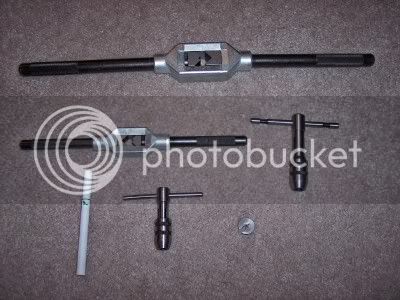zeeprogrammer
Well-Known Member
- Joined
- Mar 14, 2009
- Messages
- 3,362
- Reaction score
- 13
At the risk of someone slapping my forehead and saying 'make one'...I'm hoping to spend more time building an engine rather than every tool I need.
Anyway...I'm looking for a tap wrench I can use in my lathe or mill to ensure the threading stays true. Looking at the catalogs or on-line is not clear. I see references to 'to be turned by hand'. I think those are not the ones I'm looking for.
I also see ...'for drill presses or lathes'. Is that what I want? Or 'can also be used with drills, reamers, etc.'
I think the 0 to 1/4" range is what I'm looking for.
Suggestions? Under $15 preferred. Over $50 becomes a project. Anything in-between may cause waffling.
Thanks.
Anyway...I'm looking for a tap wrench I can use in my lathe or mill to ensure the threading stays true. Looking at the catalogs or on-line is not clear. I see references to 'to be turned by hand'. I think those are not the ones I'm looking for.
I also see ...'for drill presses or lathes'. Is that what I want? Or 'can also be used with drills, reamers, etc.'
I think the 0 to 1/4" range is what I'm looking for.
Suggestions? Under $15 preferred. Over $50 becomes a project. Anything in-between may cause waffling.
Thanks.








